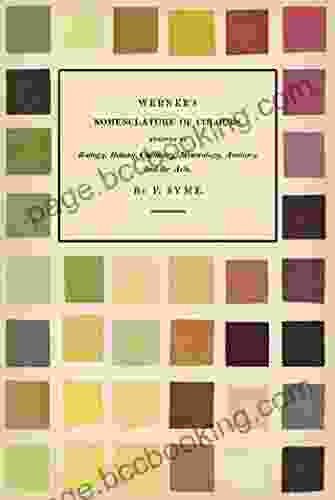Unleash Your Creativity with Acrylic Paint Pouring: A Comprehensive Guide for Beginners

Welcome to the captivating world of acrylic paint pouring, where creativity flows like liquid art. Acrylic paint pouring is a mesmerizing technique that allows you to create stunning abstract paintings by pouring acrylic paint onto a canvas or other surface. This beginner's guide will provide you with all the essential knowledge and techniques you need to get started with this exciting art form.
4 out of 5
| Language | : | English |
| File size | : | 34070 KB |
| Text-to-Speech | : | Enabled |
| Screen Reader | : | Supported |
| Enhanced typesetting | : | Enabled |
| Print length | : | 50 pages |
| Lending | : | Enabled |
Materials You'll Need
- Acrylic paint in various colors
- Canvas or other pouring surface (e.g., wood, glass)
- Mixing cups
- Stirring sticks
- Gloves
- Apron (optional)
- Pouring medium (optional)
Preparing Your Canvas
Before you start pouring, it's important to prepare your canvas properly. Make sure the canvas is clean and free of any dust or debris. You can also apply a layer of gesso to the canvas to create a smooth surface for the paint to adhere to.
Mixing the Paint
The key to successful paint pouring is mixing the paint to the right consistency. You want the paint to be fluid enough to pour easily, but not so thin that it runs off the canvas. A good starting point is to mix 1 part paint to 2 parts pouring medium. You can adjust the ratio as needed to achieve the desired consistency.
Techniques for Pouring
There are several different techniques you can use to pour acrylic paint. Some of the most popular techniques include:
- Direct pour: Pouring the paint directly onto the canvas in a controlled manner.
- Puddle pour: Pouring the paint onto the canvas and then tilting the canvas to create puddles of color.
- Flip cup pour: Pouring the paint into a cup and then flipping the cup upside down onto the canvas.
- String pull pour: Placing a string or thread on the canvas and then pulling it through the paint to create unique patterns.
Drying and Finishing
Once you have finished pouring the paint, it's important to let the painting dry completely. This can take anywhere from a few hours to several days, depending on the thickness of the paint and the temperature of the room.
Once the painting is dry, you can add a layer of varnish to protect it from wear and tear. Varnish can also enhance the colors and give the painting a glossy finish.
Troubleshooting
If you encounter any problems while paint pouring, here are a few troubleshooting tips:
- The paint is too thick: Add more pouring medium to the paint to thin it out.
- The paint is too thin: Add more paint to the mixture to thicken it up.
- The paint is not flowing smoothly: Stir the paint thoroughly before pouring to ensure it is well-mixed.
- The cells are too small: Add more silicone oil or blowing medium to the paint to create larger cells.
- The cells are too large: Add less silicone oil or blowing medium to the paint to create smaller cells.
Acrylic paint pouring is a versatile and rewarding art form that allows you to create beautiful and unique abstract paintings. With a little practice and experimentation, you can master the techniques and create stunning works of art that will impress your friends and family.
So what are you waiting for? Grab your supplies and dive into the world of acrylic paint pouring today!
Additional Resources
- Acrylic Pouring for Beginners
- Acrylic Pouring: A Beginner's Guide
- Getting Started with Acrylic Paint Pouring
4 out of 5
| Language | : | English |
| File size | : | 34070 KB |
| Text-to-Speech | : | Enabled |
| Screen Reader | : | Supported |
| Enhanced typesetting | : | Enabled |
| Print length | : | 50 pages |
| Lending | : | Enabled |
Do you want to contribute by writing guest posts on this blog?
Please contact us and send us a resume of previous articles that you have written.
 Book
Book Novel
Novel Page
Page Chapter
Chapter Text
Text Story
Story Genre
Genre Reader
Reader Library
Library Paperback
Paperback E-book
E-book Magazine
Magazine Newspaper
Newspaper Paragraph
Paragraph Sentence
Sentence Bookmark
Bookmark Shelf
Shelf Glossary
Glossary Bibliography
Bibliography Foreword
Foreword Preface
Preface Synopsis
Synopsis Annotation
Annotation Footnote
Footnote Manuscript
Manuscript Scroll
Scroll Codex
Codex Tome
Tome Bestseller
Bestseller Classics
Classics Library card
Library card Narrative
Narrative Biography
Biography Autobiography
Autobiography Memoir
Memoir Reference
Reference Encyclopedia
Encyclopedia Peter Kaminsky
Peter Kaminsky Susan Cushman
Susan Cushman Olivia Dade
Olivia Dade Wayne Johnston
Wayne Johnston Susan G Schiff
Susan G Schiff Valli Ollendorff
Valli Ollendorff Oliver Clarke
Oliver Clarke Todd Wilkinson
Todd Wilkinson Philip P Massaro
Philip P Massaro Prerna Lal
Prerna Lal Peter Stark
Peter Stark Rhonda Frankhouser
Rhonda Frankhouser Porter Shimer
Porter Shimer Prudence Bushnell
Prudence Bushnell Peter Filichia
Peter Filichia Prasad Raju V V N R Pathapati
Prasad Raju V V N R Pathapati Rachel Marie Martin
Rachel Marie Martin Patrick Bruskiewich
Patrick Bruskiewich Sally Pomme Clayton
Sally Pomme Clayton Ken Langone
Ken Langone
Light bulbAdvertise smarter! Our strategic ad space ensures maximum exposure. Reserve your spot today!

 Clarence Mitchell64 Ingenious Geometric Paper Models: Learn Modular Origami from Japan's...
Clarence Mitchell64 Ingenious Geometric Paper Models: Learn Modular Origami from Japan's... Braden WardFollow ·11.8k
Braden WardFollow ·11.8k Gary ReedFollow ·10.7k
Gary ReedFollow ·10.7k Jessie CoxFollow ·7.4k
Jessie CoxFollow ·7.4k Stan WardFollow ·5.9k
Stan WardFollow ·5.9k James GrayFollow ·15.8k
James GrayFollow ·15.8k Langston HughesFollow ·11.5k
Langston HughesFollow ·11.5k Keith CoxFollow ·5.8k
Keith CoxFollow ·5.8k Bret MitchellFollow ·10.1k
Bret MitchellFollow ·10.1k

 Marvin Hayes
Marvin HayesGoverning Law for Law School and Bar Exam Prep: Your...
Unlock the Secrets of...

 Sidney Cox
Sidney CoxUnveiling the Epic Tales of Whiskey, War, and Military...
In the tapestry of history,...

 Victor Turner
Victor TurnerGoverning Law for Law School and Bar Exam Prep: The...
What is Governing...

 Robert Browning
Robert BrowningSterling Test Prep MCAT General Chemistry Practice...
: Embark on Your MCAT General Chemistry...
4 out of 5
| Language | : | English |
| File size | : | 34070 KB |
| Text-to-Speech | : | Enabled |
| Screen Reader | : | Supported |
| Enhanced typesetting | : | Enabled |
| Print length | : | 50 pages |
| Lending | : | Enabled |














